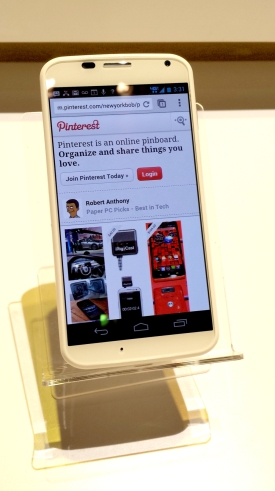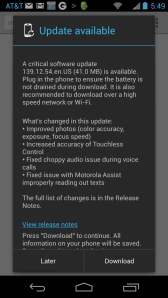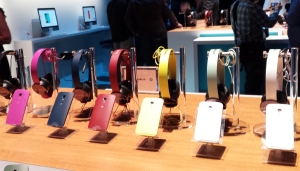The affordable, yet sophisticated Motorola Moto X succeeds in making life with a smartphone as simple, colorful and touch-free as possible, but until recently it stumbled with one of the most basic of all cell phone accessories: wired headsets with microphones.
Fortunately, a new Moto X system software update cleans up the glitch, allowing these headsets to work as they should. The free update is now being pushed out to AT&T and T-Mobile handsets. Moto X owners can wait for the notification screen to pop up or scroll through the phone’s settings to the “About Phone” section, where they can manually initiate the update.
When a Moto X with the original system software was tested with apps such as Skype and voice recorders, it often failed to recognize wired headsets with built-in mics. The earpieces would go silent and the mics wouldn’t transmit audio.
To see if your Moto X still has the original system software, download Skype and try this: Plug a wired headset with a mic to your Moto X and make a voice call to the “Echo/Sound Test Service” entry that’s preinstalled as a contact in Skype. Once connected, try to listen to the automated recording and try to record your voice when prompted.
If you have the original system software, you won’t hear and thing and won’t be able to make the recording. Try the call again without the headset–Skype should work fine. Skype and Motorola public relations representatives were contacted for comment about the wired headset problems; neither responded.
A Moto X which once failed the Skype test now works perfectly after the five-minute software, which also cures other Moto X issues, was installed.
The wired headsets used for testing included Audiofly AF45 and Lenovo 57Y4488 earbuds and a Native Union Pop Phone handset. The above problems were limited to wired headsets with mics–they did not occur with wired headsets without mics or with wireless Bluetooth headsets.
The wired headset problems were ironic since the Moto X, which has three built-in microphones, actually works very well with voice-activated apps such as Google Now since one of the mics is used for noise cancellation. With the new software update, the Moto X becomes an even better value.
Overall, the Moto X is a remarkable smartphone with good looks–which can be customized–and quality high-end features like a sharp, 4.7-inch display and a 10-megapixel camera. (Click here for full review).
Text and photos Copyright 2013, Robert S. Anthony, Stadium Circle Features










